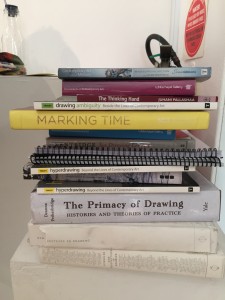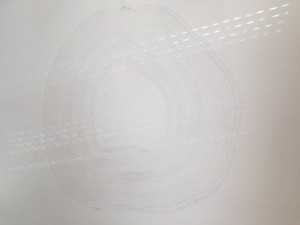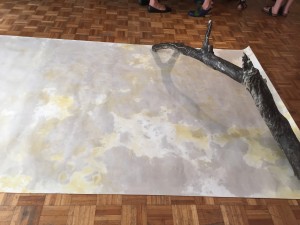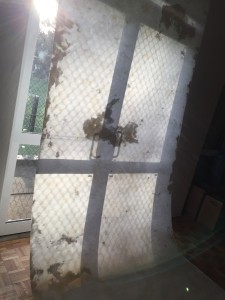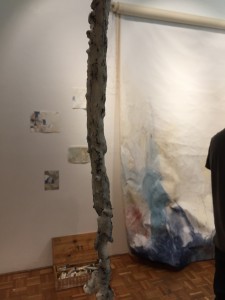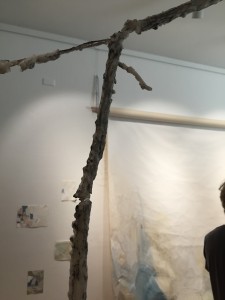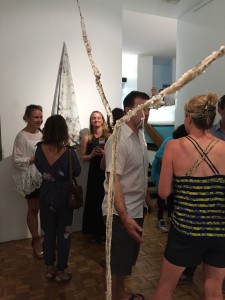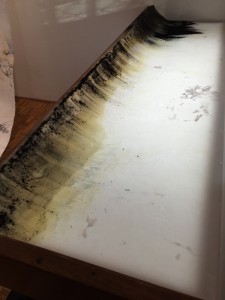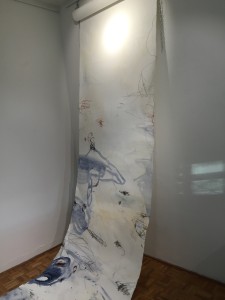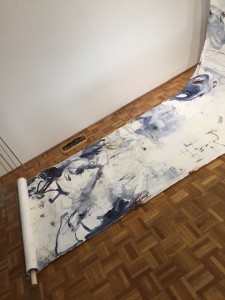we went along to the Tracing Materiality exhibition on Sunday. the artists had been doing some continuous drawings on large rolls of paper, as well as wall drawings, and working with wax. I’m going to try make it to the talk on the 20th march too. I loved all the work! and there was a stack of drawing books for me to chase up also 🙂
—
event details via https://www.facebook.com/events/1668459076503049:
‘Tracing Materiality’ is a project and exhibition by Sydney based artists Gillian Lavery, Renuka Fernando and Kath Fries. Exploring expanded drawing practices that move beyond drawing as representation to focus on materiality and mark making. The artists’ process-based approaches are open-ended, improvisational and unfolding, taking place live within the gallery over the exhibition’s duration.
Opening night with the artists and MOST wrap party Sunday 6th March 6-8pm.
Exhibition open from 5th March to 20th March. Thurs- Sun 11am-4pm
Marrickville Open Studio Trail
Continuous Drawing
Saturday 5 & Sunday 6 March 2pm
Finissage & Discussion Panel
Sunday 20 March 2pm
For further information we will be updating our blog as the exhibition proceeds.
http://tracingmateriality.blogspot.com.au/p/continuous-drawing.html
For information about MOST http://www.marrickville.nsw.gov.au/most/
